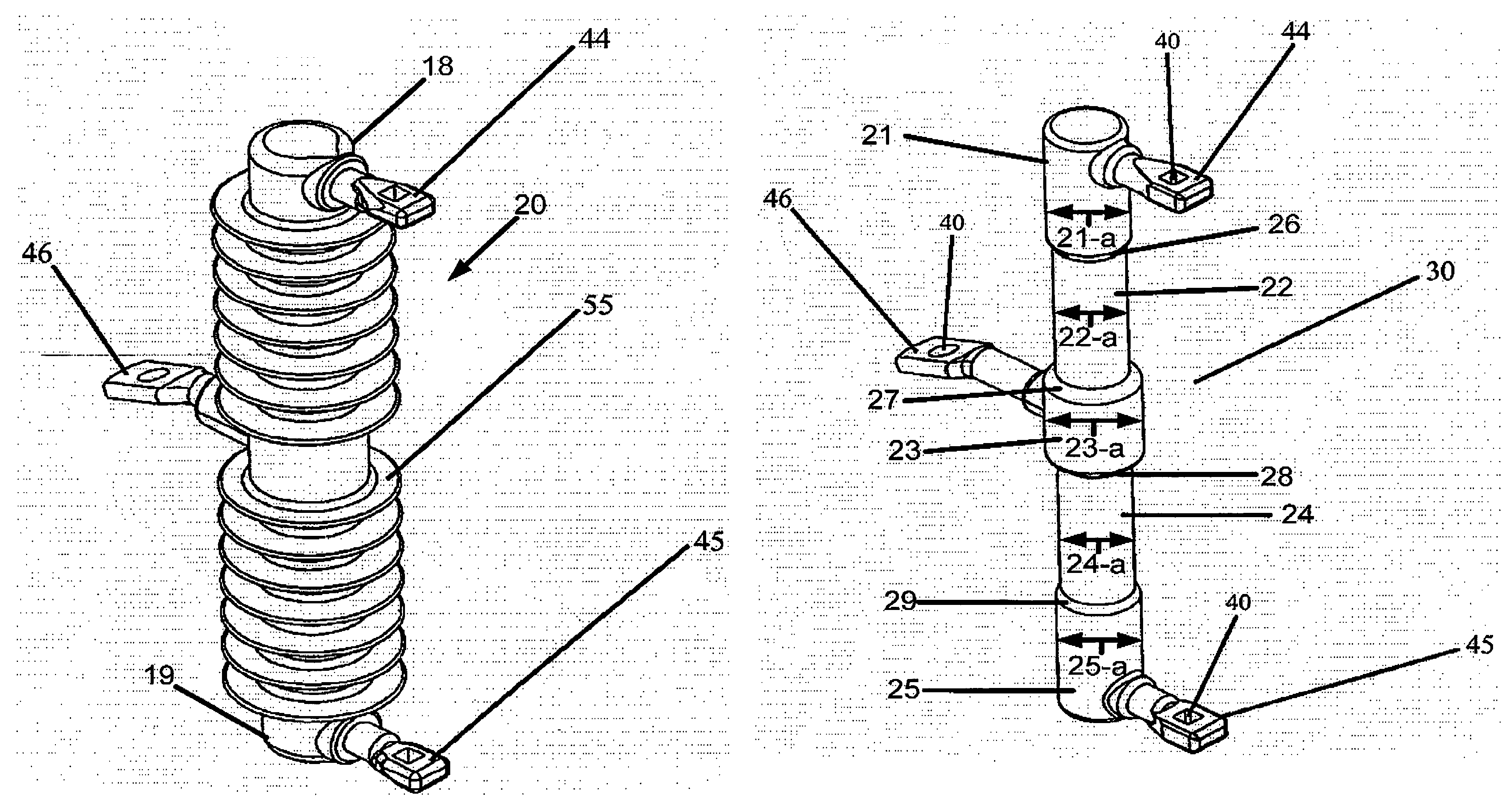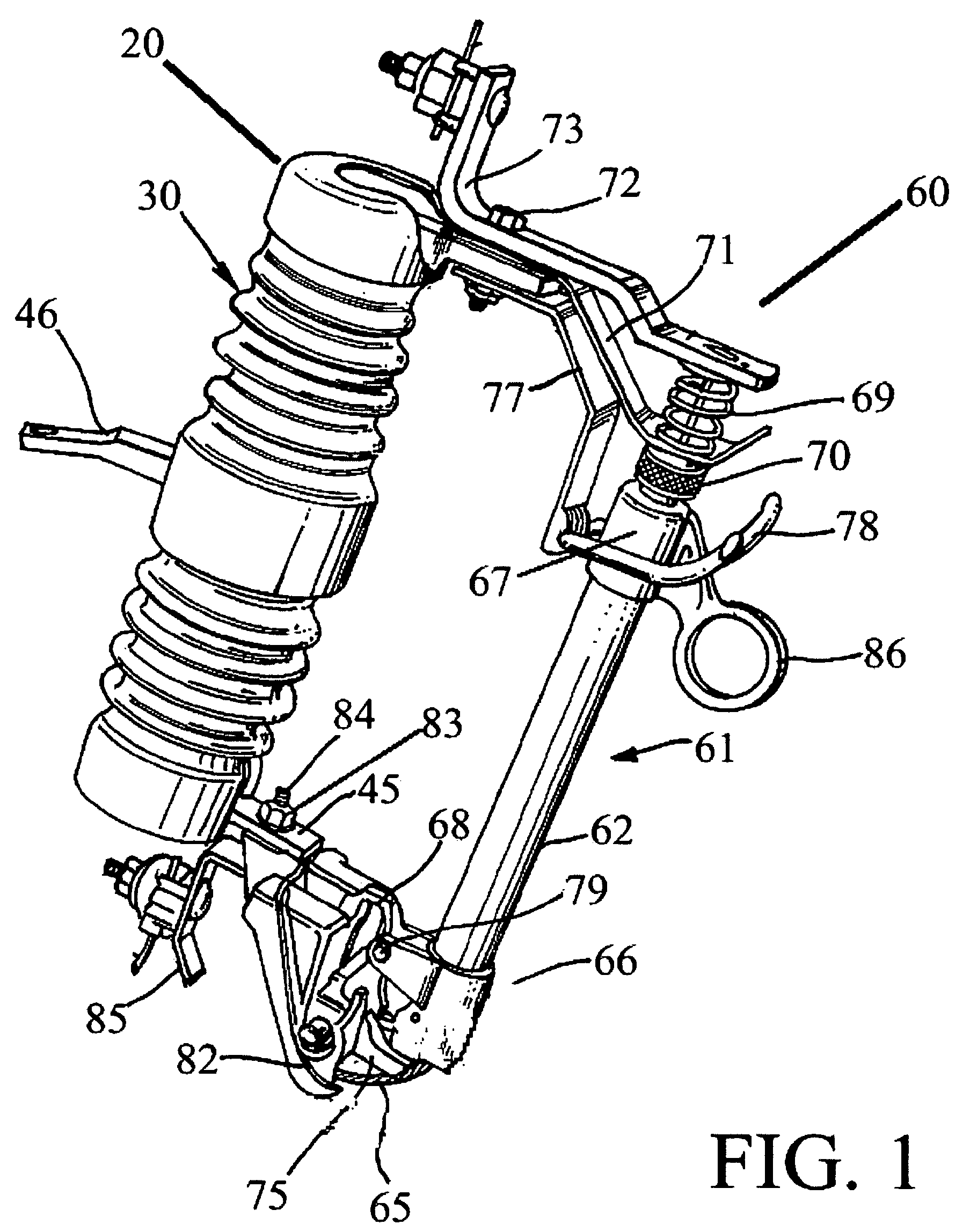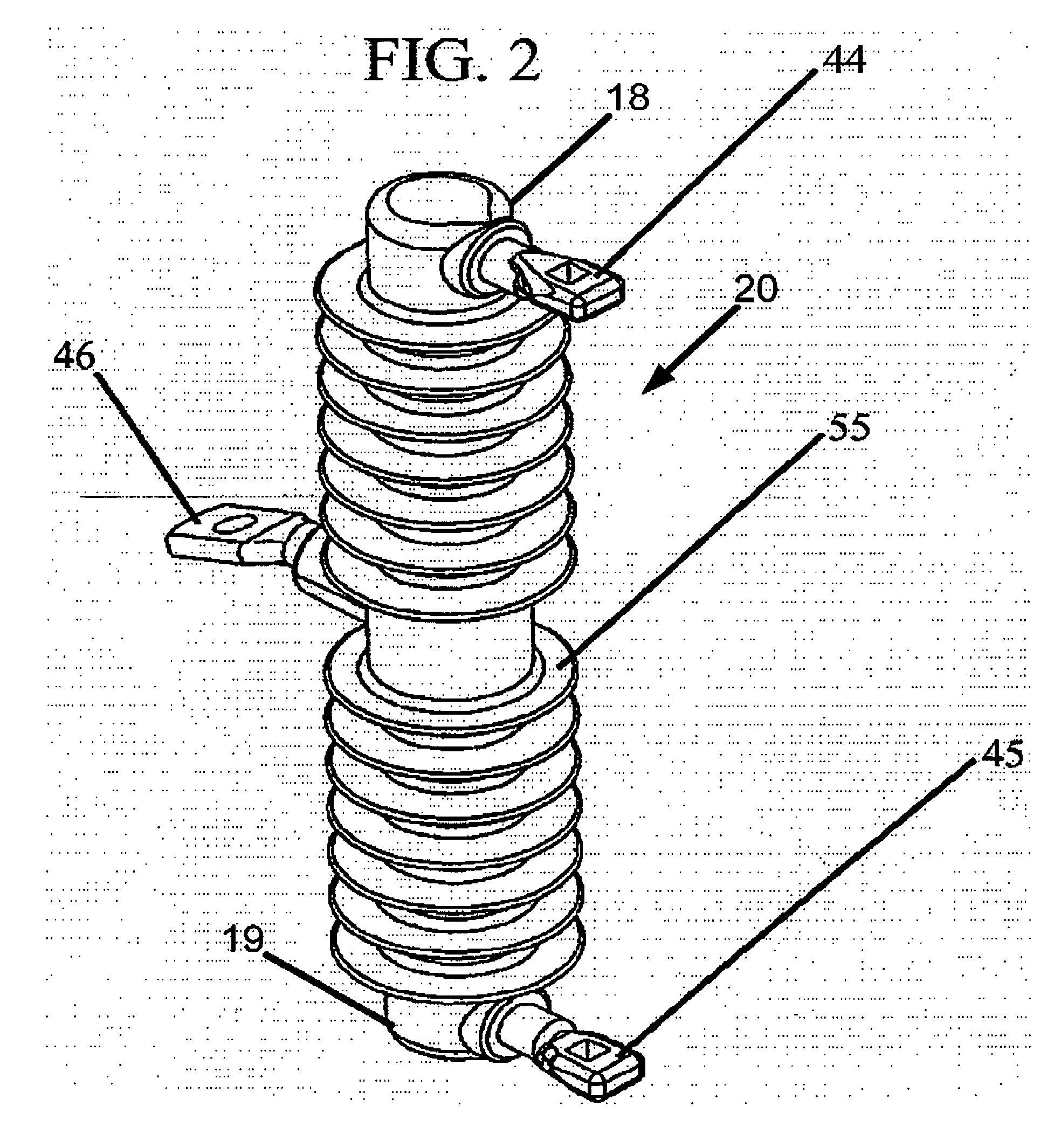Composite insulator for fuse cutout
a composite insulator and fuse technology, applied in the field of composite insulators, can solve the problems of heavy and bulky ceramic insulators, and power loss of a section of the grid
- Summary
- Abstract
- Description
- Claims
- Application Information
AI Technical Summary
Benefits of technology
Problems solved by technology
Method used
Image
Examples
Embodiment Construction
[0023]Turning now to the drawings, FIGS. 1, 2, 3, and 4 show an electrical fuse cutout constituting a preferred embodiment of the present invention, and comprising a fuse assembly 60 and an insulator 20 having a body 30 with connectors 44, 45, 46 and a housing 50.
[0024]The preferred embodiment of the present invention is provided with end connectors 44, 45 and a support connector 46. As shown in FIG. 2, the connectors 44, 45 are located at opposite ends 18, 19 of the insulator 20. According to one aspect of the present invention, the support connector 46 attaches the body 30 to a utility structure, such as a utility pole or, for example, a cross-arm. According to another aspect of the present invention, an end connector 44, 45 couples the body 30 to a conductor. According to yet another aspect of the present invention, an end connector 44, 45 couples the body 30 to a fuse assembly 60.
[0025]FIG. 5 depicts end connectors 44, 45 made in the shape of an “L,” and, as depicted in FIG. 6, ...
PUM
 Login to View More
Login to View More Abstract
Description
Claims
Application Information
 Login to View More
Login to View More - R&D
- Intellectual Property
- Life Sciences
- Materials
- Tech Scout
- Unparalleled Data Quality
- Higher Quality Content
- 60% Fewer Hallucinations
Browse by: Latest US Patents, China's latest patents, Technical Efficacy Thesaurus, Application Domain, Technology Topic, Popular Technical Reports.
© 2025 PatSnap. All rights reserved.Legal|Privacy policy|Modern Slavery Act Transparency Statement|Sitemap|About US| Contact US: help@patsnap.com



